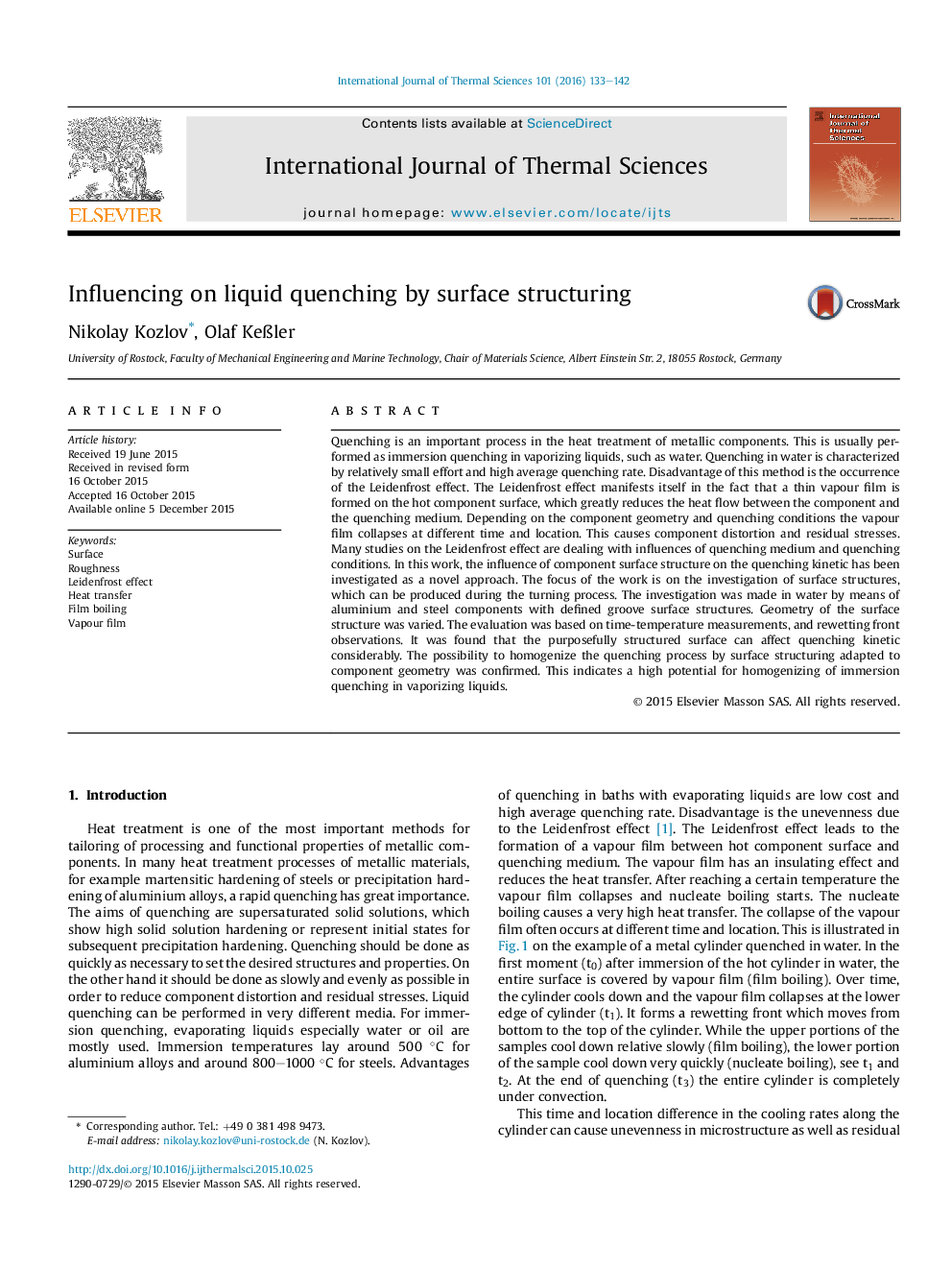| کد مقاله | کد نشریه | سال انتشار | مقاله انگلیسی | نسخه تمام متن |
|---|---|---|---|---|
| 668475 | 1458721 | 2016 | 10 صفحه PDF | دانلود رایگان |
• Surface structure has an influence on the liquid quenching kinetic (Leidenfrost effect).
• Defined groove structures can be produced by turning with defined parameters.
• Groove structured surface can affect quenching kinetic considerably.
• Surface structures with large groove depth can destabilize film boiling.
• Homogenizing of immersion quenching in vaporizing liquids by surface structuring is possible.
Quenching is an important process in the heat treatment of metallic components. This is usually performed as immersion quenching in vaporizing liquids, such as water. Quenching in water is characterized by relatively small effort and high average quenching rate. Disadvantage of this method is the occurrence of the Leidenfrost effect. The Leidenfrost effect manifests itself in the fact that a thin vapour film is formed on the hot component surface, which greatly reduces the heat flow between the component and the quenching medium. Depending on the component geometry and quenching conditions the vapour film collapses at different time and location. This causes component distortion and residual stresses. Many studies on the Leidenfrost effect are dealing with influences of quenching medium and quenching conditions. In this work, the influence of component surface structure on the quenching kinetic has been investigated as a novel approach. The focus of the work is on the investigation of surface structures, which can be produced during the turning process. The investigation was made in water by means of aluminium and steel components with defined groove surface structures. Geometry of the surface structure was varied. The evaluation was based on time-temperature measurements, and rewetting front observations. It was found that the purposefully structured surface can affect quenching kinetic considerably. The possibility to homogenize the quenching process by surface structuring adapted to component geometry was confirmed. This indicates a high potential for homogenizing of immersion quenching in vaporizing liquids.
Figure optionsDownload as PowerPoint slide
Journal: International Journal of Thermal Sciences - Volume 101, March 2016, Pages 133–142
